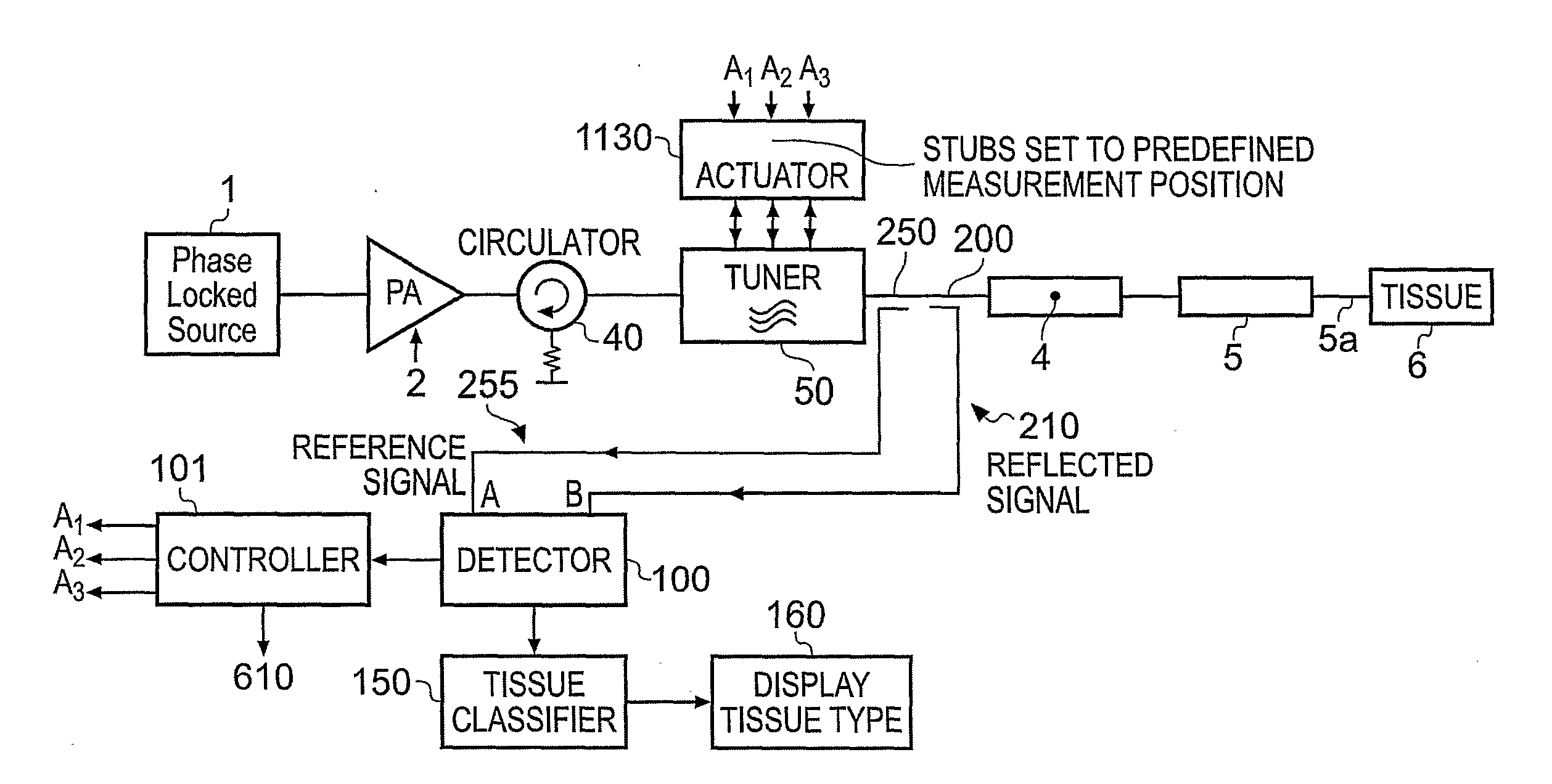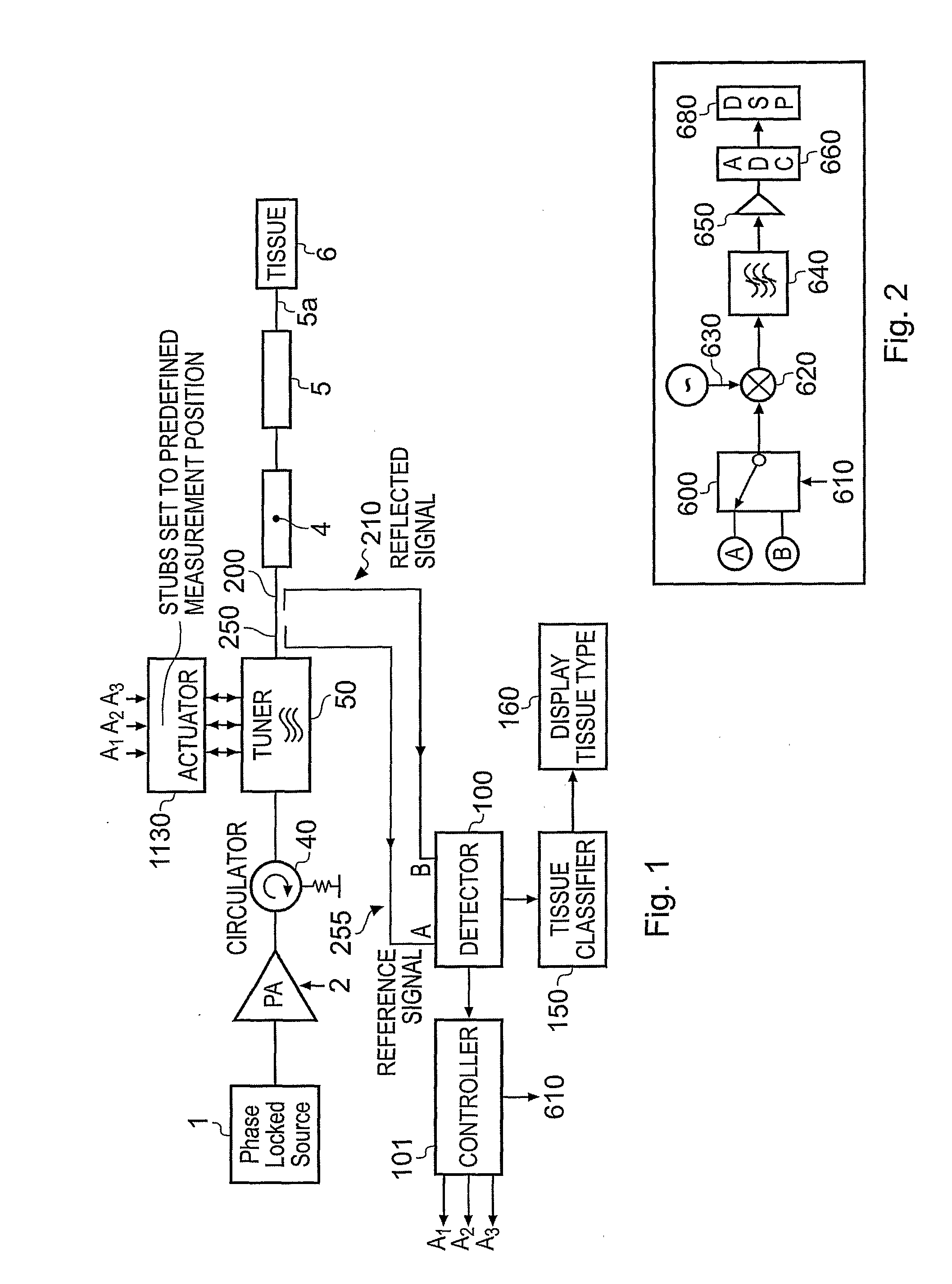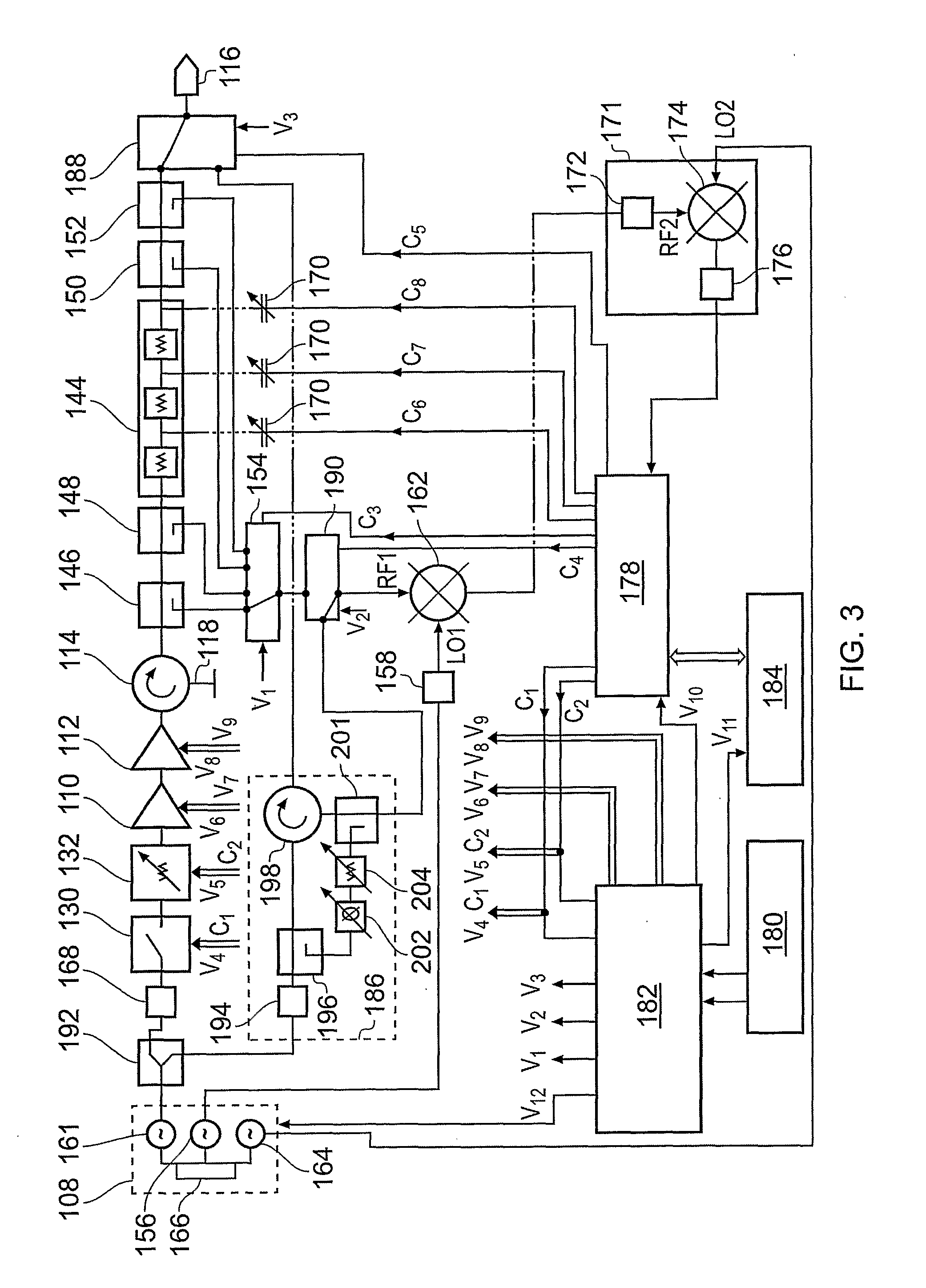Tissue classifying apparatus
a technology of tissue classification and apparatus, applied in the field of tissue treatment system, can solve the problems of tissue damage, tissue ablation, radiation power that might damage the tissue being measured, etc., and achieve the effect of reducing the cost of components and overall system development costs, reducing or overcoming this limitation requirement, and facilitating the setting up of high q cavities and structures
- Summary
- Abstract
- Description
- Claims
- Application Information
AI Technical Summary
Benefits of technology
Problems solved by technology
Method used
Image
Examples
Embodiment Construction
; FURTHER OPTIONS AND PREFERENCES
[0035]FIG. 3 shows a diagram of an electrosurgical system that is suitable for using with the invention. It includes two treatment channels (an ablation channel and a measurement channel) which are described in detail below.
[0036]Both channels begin at a microwave source 108 and include treatment antenna (probe) 116. In the ablation channel, a primary frequency source 161 is used to generate a low power signal at a predetermined frequency, a driver amplifier 110 to amplify the output signal level produced by the primary frequency source 161, and a power amplifier 112 to amplify the signal produced by the driver amplifier 110 to a level that may cause controlled tissue destruction. The output from the power amplifier 112 is connected to a microwave circulator 114 which is used to protect the output transistors contained within power amplifier 112 from excessive amounts of reflected power caused by an impedance mismatch at the distal end of the treatme...
PUM
 Login to View More
Login to View More Abstract
Description
Claims
Application Information
 Login to View More
Login to View More - R&D
- Intellectual Property
- Life Sciences
- Materials
- Tech Scout
- Unparalleled Data Quality
- Higher Quality Content
- 60% Fewer Hallucinations
Browse by: Latest US Patents, China's latest patents, Technical Efficacy Thesaurus, Application Domain, Technology Topic, Popular Technical Reports.
© 2025 PatSnap. All rights reserved.Legal|Privacy policy|Modern Slavery Act Transparency Statement|Sitemap|About US| Contact US: help@patsnap.com



